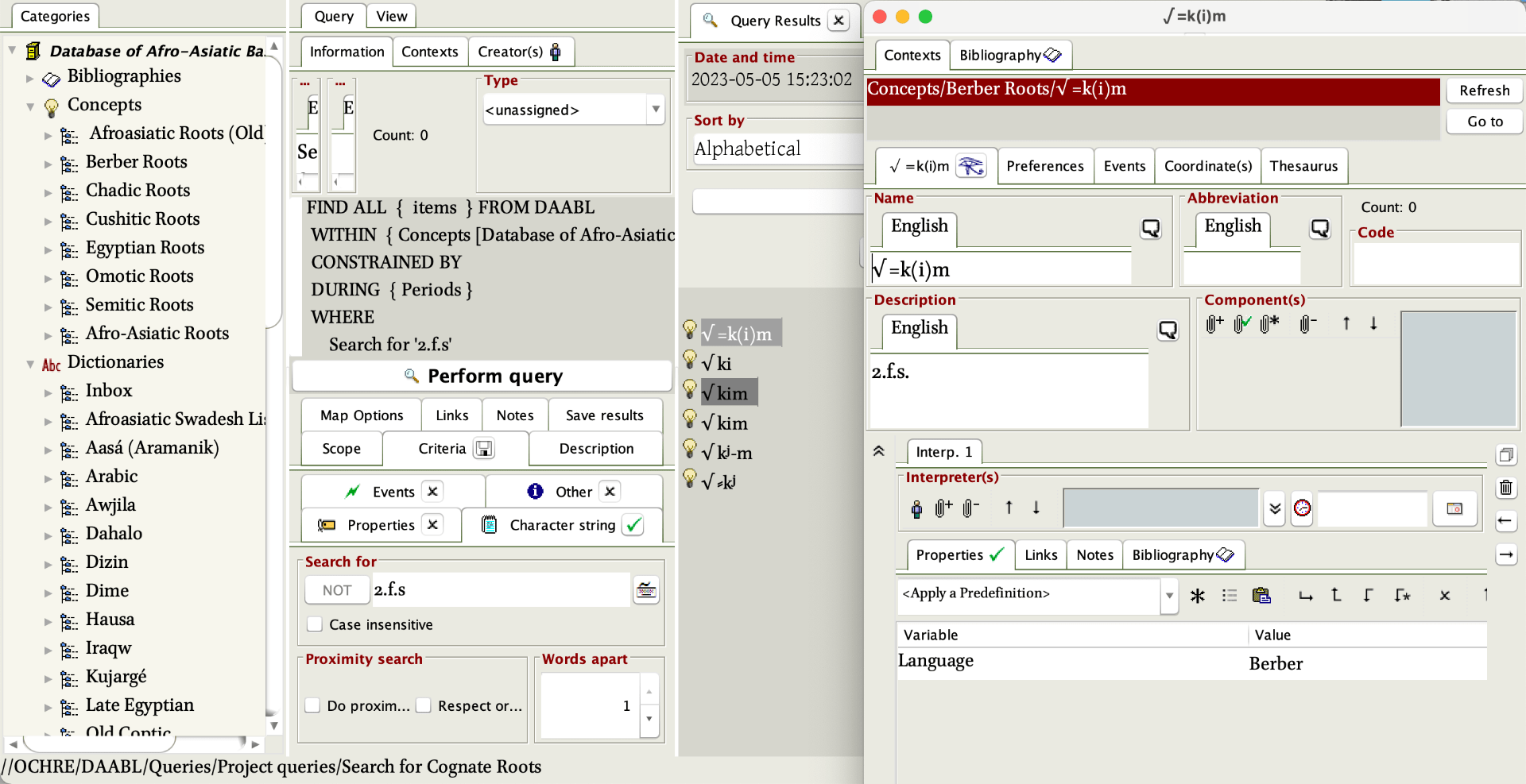Database of Afro-Asiatic Basic Lexicons
Brendan Hainline, Ph.D., Independant Scholar
The Database of Afro-Asiatic Basic Lexicons (DAABL) is an ongoing project that addresses questions of cognates, sound correspondences, and relationships between the branches of the Afro-Asiatic language family. DAABL focuses on basic vocabulary items to re-evaluate previously proposed cognates and generate new cognate pairings. The project will culminate in a new list of sound correspondences between the different Afro-Asiatic languages.
Basic vocabulary items are lexical items that are core and universal to human experience — such as personal pronouns, body parts, the numbers 1–5, and common verbs such as “eat” and “die.” The universality of these concepts reduces the chance that words for these core items would be borrowed through language contact. Because of this resistance to lexical borrowing, basic vocabulary items provide linguists with more secure cognates than other types of words.
When a sound in one language regularly corresponds to a sound in another related language in cognate pairs, this is called a sound correspondence. Regular sound correspondences and cognates are invaluable when trying to identify the phonemes of ancient languages and what they actually sounded like. Additionally, sound correspondences can be used to determine the relatedness of groups of languages within a language family and are crucial for reconstructing proto-forms of words using the comparative method.
Additionally, this project will also uncover new, much needed information about early language contact — and thereby cultural contact — between Afro-Asiatic-speaking peoples in a time before such information is easily accessible in written texts. Before the invention of writing — both in Mesopotamia and Ancient Egypt — there was significant contact between speakers of Afro-Asiatic languages and speakers of unrelated languages in Western Asia, North Africa, and East Africa. This contact inevitably led to the borrowing and diffusion of linguistic features. While some borrowings, such as trade and technology words, can be easily recognized, others are less obvious, but regular sound correspondences can be used to expose them. Words in different Afro-Asiatic languages that appear similar but do not show the expected sound correspondences derived from basic vocabulary cognates can then be identified as potential loanwords. This linguistic contact can then be analyzed together with archaeological and genetic data of population movements in order to establish points of cultural interaction before written documentation. In this way, DAABL will lead also to new revelations about prehistoric interactions between Afro-Asiatic language-speakers and their neighbors.
OCHRE has tools that facilitate the study of the often-complex relationships between words in related languages. Derivations, shared roots, loanwords, and other connections between words can all be easily input as links between lexeme entries to illustrate the relatedness of these words and languages. OCHRE also has the capability to record and display multiple orthographies and scripts (Arabic, Hebrew, and even ancient scripts such as cuneiform and hieroglyphs) and also phonological signs and diacritics that are necessary for this comparative project.

Analyzing Afro-Asiatic Lexical Entries using OCHRE
